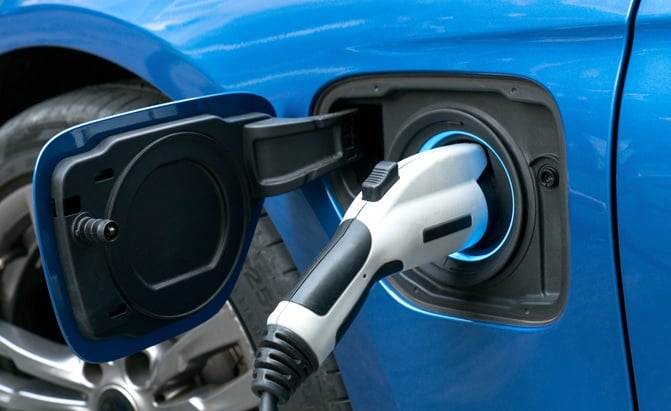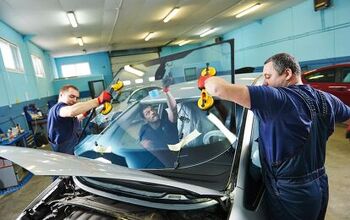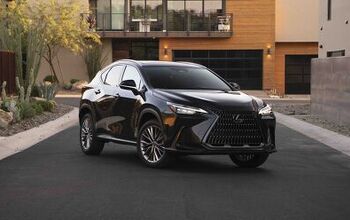The Best Home EV Chargers

One of the best parts of owning an electric vehicle is never having to go to the gas station to refuel. Instead of finding a pump, you can charge at home every night. Not only is having an EV charger at home convenient because you can charge any time you want, but you’ll also never have to worry about waiting in line if all public chargers are occupied. Wake up every morning to a fresh and fully charged battery. You can even pre-condition without reducing your range.
Home chargers come in a huge range of prices, but they’re worth the investment. You should also check for available rebates, tax credits, and other incentives in your area for installing a home EV charger. The NCSL has an interactive map that will help you get started. Note that many EV chargers aren’t UL-listed and may not qualify for an installation rebate.
There are a few factors to take into consideration when choosing the right electric car charger. For starters, is your vehicle a plug-in hybrid or a battery-electric vehicle? A plug-in with both a battery and an engine, like the Chevrolet Volt or Jeep Wrangler 4Xe, doesn’t necessarily need a faster and more expensive charger to fill its smaller battery overnight. Fully electric vehicles, like the Chevrolet Bolt or a Tesla, don’t have any other way to move and take a long time to fill their large reserves on a slow charger. You might also want to plan for the future and have the capacity to charge a full electric later on.
If you’re shopping for a car charger, you have probably realized a standard wall outlet might not be enough. “Level 1 chargers, which plug into a standard wall outlet, can be extremely affordable. Level 2 chargers charge several times quicker than Level 1 chargers, but they require an electrician to install them, along with a different power outlet and circuit that you may not already have available in your household. Some chargers are hardwired, while others can be simply plugged in. Determine whether you prefer a plug-and-play solution or a charger that requires professional installation by an electrician.
Lastly, if you aren’t installing your charger inside a garage, make sure to purchase one that is rated for outdoor use and exposure to sun, wind, dirt, and water.
For more information about charging your car at home, see our Table of Contents.
Table of contents
- 1. Editor's Pick: JuiceBox Smart EV Charger
- 2. Extreme Charging: Wattzilla
- 2. Best Value: Lectron 240V 40 Amp Level 2 EV Charger
- 3. Pulsar Plus Level 2 EV Charger
- 4. AmazonBasics Level 2 EV Charging Station
- 5. Grizzl-E Level 2 EV Charger
- Everything You Need to Know About Home EV Chargers
- Do I Really Need One?
- Do I Need a Level 1 or Level 2 Charger?
- Hardwired vs. Plug-in
- What to Look For in a Home EV Charger
- Additional Features of Home EV Chargers
- What are the Power Requirements for EV Charging, and What are the Different Types of Outlet?
- What About Supercharging?
- Recent Updates:
1. Editor's Pick: JuiceBox Smart EV Charger
The JuiceBox series of home EV chargers is available in three variants, 32 amp (7.7 kW), 40 amp (9.6 kW), and 48 amp (11.5 kW). The 32- and 40-amp versions can either be used as a plug-in charger (NEMA 14-50) or hardwired, while the JuiceBox 48 is only currently available as a hardwired option. Built on the universal J1772 charging standard, all versions of the JuiceBox are WiFi-enabled, Level 2 charging stations that can charge all electric vehicles on the market, including Teslas with an adapter.
With these chargers, you can use the JuiceNet mobile app and web portal to control scheduling, energy metering, notifications, and LED charging light indicators. You can even ask JuiceNet to remind you to plug in your vehicle if you've setup up a daily charging routine. These chargers are compatible with Amazon Alexa and Google Home, so you can use voice commands to monitor, manage, and control your charger.
Each charger is housed in a weatherproof, dust-tight, polycarbonate casing that is indoor and outdoor rated. They're equipped with a 25-foot cable with a standard SAE J1772 plug at the end, and the company provides a three-year warranty for use under normal residential operating conditions.
You can see our full review of the Juicebox
Pros | Built-in WiFi, JuiceNet support, compatible with Amazon and Google, compact size, several variants to choose from |
Cons | Some users report problems with the WiFi |
2. Extreme Charging: Wattzilla Waltzilla 80 amp
If you're passionate about your EV, then this is the model for you. It's not cheap, but it offers an unmatched list of features starting with 80 amp power delivery. This lets you charge your EV at 19.2 kW, the fastest Level 2 charging currently (pardon the pun) possible. 80 amp charging can let you charge premium EVs like the Lucid Air, Porsche Taycan, or Ford F-150 Lightning charge more than three times faster than a basic Level 2 home charger and twice as fast as most of this list.
The WaltZilla isn't the only 80A unit around, but it is the only one that's designed for flush mounting in your wall. It almost disappears when it's installed, with just the panel showing and the plug protruding. The charger has minimal power consumption in standby, it's Energy Star certified, and it has a 39-month standard warranty. The unit's stainless steel enclosure and gold-plated circuit boards are designed for very long life.
Pros | Fastest Level 2 charging possible, flush in-wall mounting |
Cons | Price, your home electrical will probably need an upgrade |
3. Best Value: Lectron 240V 40 Amp Level 2 EV Charger
Lectron makes so many EV chargers we can't really count them all, and they're not really big on snappy names. What they do have is a charger for every need and budget, from a 16 amp Level 1 charger you could plug into an outlet in your kitchen (if you didn't have much to charge), to much faster and more feature-rich EV chargers like this 40 amp Level 2 charger.
This one needs a NEMA 14-50 outlet (or a clothes dryer outlet with an adaptor) instead of being permanently wired to your wall. It provides up to 40 amps and 9.6 kW of charging at 240 volts, which should be up to seven times faster than a Level 1 charger on household current. The always-on LED display shows current, voltage, temperature, and charge time, and the housing is IP65 dust- and water-resistant.
If you're looking for a severe service EV charger to leave outside in the weather, look at the Bosch unit next; but you'll also be looking at several times the expense. Having the actual charging circuitry located in a module in the cable may be inconvenient, but for an everyday charger to live in a garage, the Lectron is a great choice.
Pros | Multiple versions available, Level 2 charger, small and light |
Cons | Not really wall-mounted, relatively short 16-foot cable |
4. Pulsar Plus Level 2 EV Charger
Looking for a more compact design because you don't want a large, unsightly charger hanging from your garage wall? This sleek Level 2 charger from Wallbox fits the bill, offering 240-volt charging in a small package. The Pulsar Plus offers up to 40 amps of power, but automatically adjusts to varying charging needs down to 16 amps. This means charging your EV up to seven times faster when compared to standard, Level 1 charging cables. It comes with a 25-foot charging cable.
By using the myWallbox app, you can connect the charger to your smart devices, allowing you to wirelessly control and monitor your charger through Bluetooth or WiFi. With the app, you can create charging schedules to reduce the cost of charging, as well as set reminders and get notifications of charging progress. Have two EVs at your home and need a pair of chargers? You can connect more than one of these chargers to the same electrical circuit thanks to built-in smart power management, which will automatically balance charging for the most efficient energy distribution.
This recommendation is UL listed for electrical safety and NEMA Type 4 rated for water-tightness and dust resistance. It can either plug into a NEMA 14-50 outlet, or be hardwired.
Pros | Compact design, Level 2 charger, accompanying app to wirelessly control the charger |
Cons | Mounting hardware isn't great, app doesn't have a ton of features |
5. AmazonBasics Level 2 EV Charging Station
It was only a matter of time before Amazon's in-house brand, AmazonBasics, began manufacturing home EV chargers. The company's offering is a Level 2 option, offering 240-volt, 32-amp charging with an 18-foot cable. If you're able to take advantage of the 32 amps, you can get up to 25 miles of range per hour from this charging station. The home station uses a NEMA 6-50 outlet, while the hardwired station can be installed indoors or outdoors. If the 18-foot power cable is too short for you, there's an option for a 25-foot cable.
Constructed from durable PC material, this recommendation has an IK10 rating for impact resistance and a NEMA-4 rating for water/dust protection. This is one compact charging station, measuring just 11.2 inches by 7.6 inches by 3.2 inches and its been awarded a Red Dot Award for its design. AmazonBasics includes a one-year limited warranty.
Pros | Level 2, up to 25 miles of range per hour (32 amp), award-winning compact design |
Cons | Only a one-year warranty, basic charger |
6. Grizzl-E Level 2 EV Charger
Made in Canada, this Level 2 EV charger comes with a three-year warranty and full customer support, making it a good option for those who are new to home EV charging. Attached to this charger is a NEMA 14-50 plug for plug and play installation, and a 24-foot premium cable. It offers adjustable amperage of 40A, 32A, 24A, and 16A, to take advantage of the most efficient charging conditions. Charge rates vary from 28-30 miles per hour at 40A, 22-25 miles per hour at 32A, 15-18 miles per hour at 24A, and 10-12 miles per hour at 16A.
It's IP67 rated for water resistance and is also fire resistant. Keep yourself protected with a collection of safety features including built-in GFCI, over current, over voltage, under voltage, missing diode, ground fault, and over temperature protections.
The exterior of the charger features a heavy duty, rigid design with an air tight metal enclosure. It can easily be detached from the wall mount, if you ever have to transport it to a different location.
If you prefer to keep things simple, this is the home EV charger for you. There's no wireless capability, so there isn't an app you need to configure and setup. In other words, if you simply want a charger you can plug into your EV to charge it without messing with any other settings, consider Grizzl-E.
Pros | Heavy duty construction, three-year warranty, made in Canada, adjustable amperage, IP67 rated |
Cons | No wireless capabilities, no app support, short power cord |
Everything You Need to Know About Home EV Chargers
Electric vehicle (EV) chargers are actually a bit of a misnomer. That's because your EV charger is actually onboard the vehicle, taking the AC source from your "wall charger" and converting it to DC, so your car's battery pack can be recharged. It's also the reason why they're officially called Electric Vehicle Service Equipment (EVSE), although they're widely known as a charger since it just makes more sense.
Essentially, when you're shopping for a home EV charger, you're actually looking for an EVSE that can safely recharge your car. This guide aims to explain everything you need to know about home EV chargers before you invest hundreds of dollars into one.
Do I Really Need One?
At the end of the day, that's a question only you can answer. But here are a few things to guide you on your way to finding the right answer.
First, do you own a plug-in hybrid electric vehicle (PHEV) or a battery-electric vehicle (BEV)? Most PHEVs, like the Chevrolet Volt, don't have a very long range, which means they only need a couple hours to fully charge when using a Level 2 charger. Some PHEVs may even recharge their entire range using a standard 110-volt Level 1 charger, which means you wouldn't need to install anything fancy or expensive to fully charge your car each night.
But if you do own an all-electric vehicle, chances are a Level 1 charger won't completely do the job overnight. Depending on how far you drive each day, you may need to turn to public charging if you don't have a charger at home. The question you then have to ask is, how convenient is public charging? Do you have public chargers near your home or even at your work? Do they have long lines?
Having a Level 2 charger at your home is the most convenient option if you own a BEV, but they aren't cheap, and most of them need to be professionally installed. Ideally, you purchase a charger that will last you years, one that you can even use for future new car purchases.
Do I Need a Level 1 or Level 2 Charger?
As their names suggest, Level 2 chargers are able to recharge your electrified vehicles several times faster than a Level 1 charger. In the most basic sense, Level 1 chargers use a standard power outlet that you can find around your house. They're very slow, giving you around 3 to 4 miles per hour. If you're just driving a few miles to work every day, that could easily be enough, and you'll need even less if you own a PHEV. If you can also plug in while at work, that may be enough to cover you for your daily commute.
For most electric vehicle owners, however, you'll want a Level 2 charger at home. This often needing a 240-volt outlet, similar to what an electric dryer or an oven uses. Not all households will have an outlet ready to go, which means you will need one professionally installed. If you're in an older home with a 100 amp breaker box, you'll probably need to upgrade to 200 amp service.
Level 2 chargers also come in a variety of charging speeds, so pay close attention when choosing one for your home.
If you're looking at public charging, most public Level 2 chargers max out at 6.6 kW, which is around 24 to 26 miles per hour. You can get more than that from some Level 2 home chargers.
Hardwired vs. Plug-in
You may notice once you start shopping for chargers that many of them are available as a hardwire option, which means it doesn't plug into an outlet. If possible, avoid hardwired chargers and instead, pay an electrician to install the correct plug for your charger. The biggest benefit is that if you ever have to move the charger, you can do so more easily. Typically, it costs about the same to have someone either professionally hardwire a charger or install the correct outlet, so get an outlet if you can. Plus, if you use a NEMA 6-50 outlet (see below), it gives you, or someone who buys your home, options beyond car charging,
One thing to note, local code may require some outdoor chargers to be hardwired. Make sure you check your local requirements before purchasing a charger if you need to have it hardwired.
What to Look For in a Home EV Charger
Generally, when you're shopping for a home EV charger, you'll want to look at its amperage to determine how much range you will get per hour. It's recommended to purchase a charger that can handle at least 30 amps, even if your vehicle can't take full advantage of it. There's a good chance you'll eventually upgrade your EV to a newer model, and purchasing the right charger now helps future proof the investment. Pay close attention to the circuit breaker rating that is necessary for your charger, and whether you will be able to accommodate that in your electrical panel.
You also need to determine whether you will be installing your charger indoors or outdoors. If you don't have a garage, make sure the charger you're purchasing is rated for outdoor use.
There are also portable EV chargers available that don't require you to install an actual "station" in your garage or outdoors. You're normally trading performance for convenience when going with a portable charger, but for many, it's worth it. Sometimes it's just simpler to plug something into a wall outlet and then into your car.
Some chargers will also be UL- or ETL-listed, which means they have met the requirements of widely accepted product safety standards for EVSEs. If you want to be certain a charger is safe to use, look for the UL or ETL logo.
Lastly, check with your local electric utility company to see if there are any rebates or incentives available for installing a charger at home. You may be able to get back some of the cost for your charger through a rebate.
Additional Features of Home EV Chargers
In a connected age, it's little surprise some EV chargers come with WiFi capability. These chargers allow you to download an app onto your smartphone so that you can remotely control the charger. Features include the ability to schedule charging, energy metering, and more. There are even chargers that are compatible with Amazon's Alexa, so you could use voice commands through any Alexa device such as an Echo Dot.
Keep in mind that typically your charger will likely be installed in an area that your home WiFi may not reach. Keep that in mind if you plan on investing into a WiFi-enabled charger, and make sure your wireless network has a strong enough signal to reach wherever you plan on installing the charger.
Other chargers may offer you the ability to set when to charge without having to use WiFi and an app. It's a nice feature to have, allowing you to plug in your car and have it charge during off peak hours, when electricity may be cheaper. The scheduling feature may not work for all vehicles, so make sure to check with the manufacturer or look at reviews to see if your car is compatible.
What are the Power Requirements for EV Charging, and What are the Different Types of Outlet?
Level 1 chargers can and usually do run off of the same household current as your small appliances, and plug into the same regular outlets. There's only so much power you can draw safely from those, as you know if you ever tripped a circuit breaker when running too many things. In new houses, you should have 20 amp circuits, but if your house is more than 25 years old, 15 amps is common. Most Level 1 chargers draw 16 amps, which is a recipe for trouble if you can't supply enough power.
Level 2 chargers always require a dedicated circuit, usually either 40 or 50 amps. If you're lucky, you might already have one—people who use things like welders or big air compressors in their garage need that much power. You'll still need to have an electrician inspect the circuit and install the charger, but you should be able to plug right in, although you might need an adaptor. You can also have your Level 2 charger wired in directly, which will cost less than having an outlet installed, but is less flexible.
There are two kinds of plugs you might find or need, NEMA 14-50 and NEMA 6-50. It's easy to find an adaptor to use with either one.
If you have an electric stove or clothes dryer in your house, you probably have a NEMA 15-40 outlet. These are the most common outlets for Level 2 plug in charging and is generally the most versatile option. However, Tesla has switched to the 6-50, and the rest of the industry is likely to follow.
Heavy-duty electrical tools use the 6-50 outlet. The only real difference is the 6-50 has three holes, instead of four like the 14-50, because it doesn't have a neutral circuit.
What About Supercharging?
Photo credit: Ithaca-Tompkins County Transportation Council
DC Fast Charging, Tesla's Supercharging and CHAdeMO are different standards of Level 3 chargers that can charge your EV anywhere from three to 20 miles a minute. Most of them are capable of delivering an 80% charge in 30 minutes. To do this, they typically need 400-480 volts, twice as much as most homes receive.
If cost was no object, you could have one installed for home use. You can't have a Tesla Supercharger installed at all, as the company doesn't make them available. There are Tesla charging adaptors for CHAdeMO chargers, however.
You would first need an electrical engineer to create a site design and obtain the necessary permits from your city or town. You might have to start a business and have it insured, which might not be permissible at all in some neighborhoods. Your engineer would work with a commercial electrician and the power company to run dedicated wiring from the pole to a transformer, which might have to be sited on a concrete pad. A 480 volt switchboard would feed power to a subpanel, and then to your Level 3 charger.
Fortunately, there are some home options for Level 3 chargers, instead of just commercial. With plenty of options under $5,000, it's actually going to be the least expensive part of your project.
At the low end, you might be able to have a Level 3 charger installed at home for $20,000, but we would budget $50,000 and hope for the best. If you have five pure battery electric vehicles (BEVs) in your household and limited access to public chargers, it might even make sense to have a two-head Level 3 charger installed. But for 99.9% of people, a Level 2 charger is more than enough.
Recent Updates:
October 9, 2023: Added Waltzilla, Updated Lectron with newer model
May 5, 2023: Reduced our list to five recommendations. Our top picks remain unchanged.
June 30, 2022: Removed Morec Level 2 EV Charger due to poor reviews.
June 17, 2022: Updated product links, removed out of stock ChargePoint Home Flex.
June 9, 2022: Updated products links, removed unavailable Siemens VersiCharge.
January 31, 2022: Removed out of stock Bosch EV810, returned Siemens VersiCharge to list.
January 7, 2022: Removed unavailable Clipper Creek HCS-40 charger. Added Blink HQ 150 EV Charging Station.
We are committed to finding, researching, and recommending the best products. We earn commissions from purchases you make using the retail links in our product reviews. Learn more about how this works.
Photo Credit: phanat / Shutterstock.com

After completing a degree project in automotive design, Dave wrote and photographed for almost a decade in print car magazines (remember those?), before transitioning to digital. He now subjects a series of old high-performance cars to the roads and weather in Vermont and wonders why they're always expensively broken. Please stop when you see him crawling under one on the side of the road.
More by David Traver Adolphus









































Comments
Join the conversation
Looking out my living room window, I see about a dozen cars parked on the street. Typical yard size is about 50 to 75 feet, curb to the house. Further, the cars are parked on my side of the street. Some of the car owners live on the other side of the street. This is the gorilla in the room that has received little consideration. How do people living in a typical North American city, especially older cities, going to take advantage of home charging? The answer, at least in the short term, is they won't.
I'm one of the fortunate ones on the block that has a garage. However, I'm not an EV fan, so I don't have the charger concern. This is a typical neighborhood scenario in older cities. The power lines run behind the homes in the alleys. But, you can't park in the alleys for obvious reasons.
The logistics of EV ownership will be a real challenge for the old cities. For now, they will have to rely on charging stations. The city I'm in has a total of 199 charging stations. There's one Tesla Supercharger stations with 8 stalls. There's 4 Destination Charging Stations with 10 stalls between the 4. Not very EV friendly.
The planning involved to make it convenient for anyone wanting to own an EV is going to be monumental. And, to make these concerns go away, it's going to cost a pile of money. Don't think for a minute that the energy providers or the government will absorb the cost. The consumer will.
EVs are fine for some, but it's a long way for EV ownership to be a good thing for the masses.